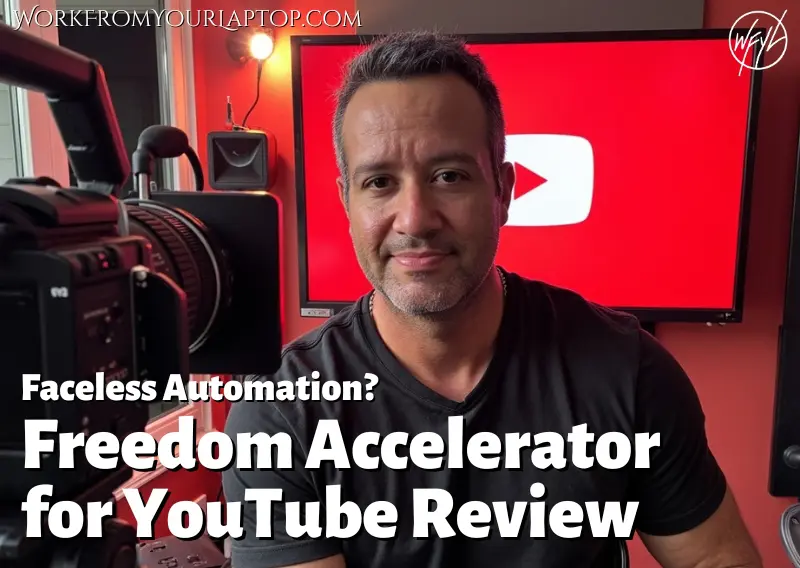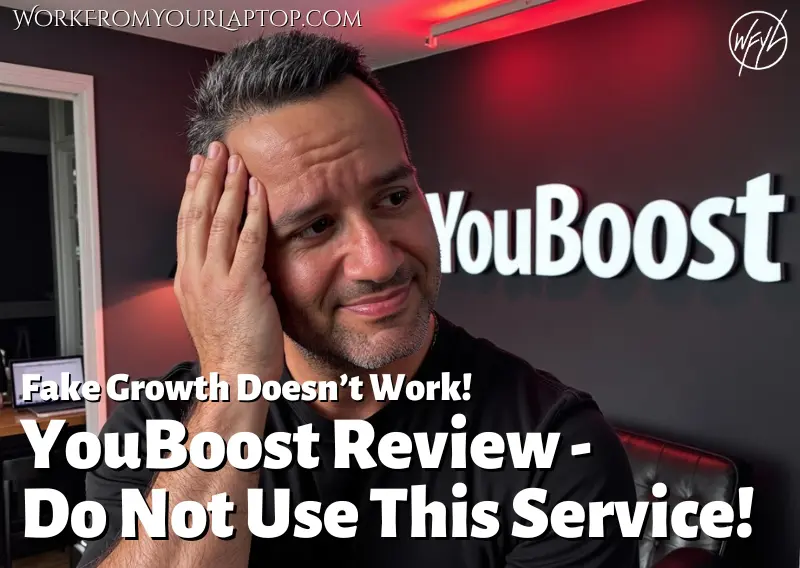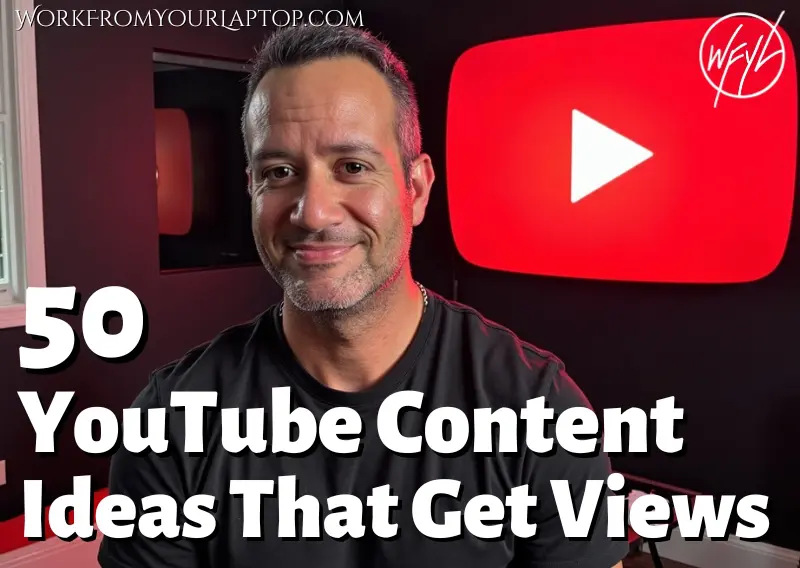Last updated on August 27, 2025 · In-depth guide, 5–7 min read

Everyone you know (and their mom) gets on YouTube. YouTube isn’t just a platform for sharing funny cat videos or makeup tutorials anymore. It’s become a goldmine of online opportunity. But not everyone on YouTube is raking in millions like PewDiePie or MrBeast. So, how much money can small YouTubers make?
TL;DR How Much Do Small YouTubers Make On Average?
On average, small YouTubers earn $1 to $5 per 1,000 views, but income grows through smart strategies like affiliate marketing, sponsorships, and building a loyal community.
- Ad revenue is just the beginning. Small creators typically earn between $1–$5 per 1,000 views, but relying solely on ads isn’t sustainable long-term.
- Multiple income streams = better stability. Affiliate marketing, merch sales, and platforms like Patreon can significantly boost a small creator’s earnings.
- Engagement impacts revenue. High audience interaction (likes, comments, shares) improves video visibility and helps attract sponsors.
- Your niche matters. Topics like finance or tech often generate higher CPMs than lifestyle or vlog content.
- Consistency drives momentum. Frequent uploads, longer videos, and SEO best practices help build an audience and increase monetization potential.
Factors Influencing the Earnings of Small YouTubers
The amount a small YouTuber earns isn’t just luck of the draw. Several key factors play into how much cash flows into their pockets, starting with their niche. Some topics, like technology or finance, tend to rake in higher paying ads compared to vlogs or lifestyle content.
The audience demographic is another big player. Advertisers dish out more for viewers residing in countries with higher purchasing power, making these viewers more valuable on the ad revenue front.
Then there’s engagement. It might sound a bit buzzword-y, but audience interaction matters a lot. Videos that encourage likes, comments, and shares often see better earnings. A lively and engaged audience can boost a channel’s visibility on the platform and attract sponsorships. Check out my list of 50 YouTube content ideas that actually get views!
Do Like the Pros Do!
Check out my article on “How to Make Money on Patreon” and see that it’s not just for YouTube. Monetize your social media, podcasts, and more with the leader in crowdfunding!
In my experience, engagement really is everything. The SECOND I started getting consistent engagement from viewers I knew I was reaching my audience. Even the negative comments that disagree with your POV are welcome (as long as they’re not profane.) It means you’re triggering emotion and response. This is a good thing!
Video length and upload frequency are factors, too. Consistent uploads build a loyal audience and increase views. This improves ad revenue potential. Longer videos can fit in more ads, which means more moolah per video.
If you’re looking to get an extra ad thrown into the middle of your content, shoot for the 8 minute mark with your videos. If your video is 8 minutes long it qualifies to have ad during the content.
Finally, being savvy with SEO (search engine optimization) helps videos get noticed, drawing in more views and potentially increasing earnings. More eyes on a channel mean more opportunities to monetize in creative ways.
Strategies for Small YouTubers to Increase Their Revenue
- Diversify your revenue streams. Don’t rely solely on ad revenue—use affiliate marketing to earn commissions by promoting relevant products to your audience.
- Build a community on platforms like Patreon. Offer exclusive content to subscribers who want to support your channel, creating a steady, reliable income stream. Check out my guide to Patreon here.
- Collaborate with other creators. Joint projects can grow your audience and lead to shared sponsorship deals, boosting reach and revenue.
- Sell your own merchandise. Branded products like T-shirts, mugs, or digital downloads can strengthen your brand and provide an extra layer of income.
- Keep learning and adapting. Stay current with YouTube algorithm updates and trends, and tweak your content strategy to increase engagement and visibility.
Adapting to Changes
Staying flexible and willing to adapt is crucial. YouTube frequently updates its algorithms, and trends can shift quickly. By staying informed, knowing which YouTube metrics to key in on, and tweaking your approach based on what’s working, you can boost your growth trajectory.
Keep an eye out for emerging trends and don’t shy away from experimenting with new content formats to capture new audiences. Your audience will appreciate the change of pace and analytics will tell you whether it’s worth it to keep going in that new direction or not.
Comparing Ad Revenue Vs. Other Income Sources for Small YouTubers
Looking beyond ads can open up a world of possibilities. Affiliate marketing allows you to earn commissions by recommending products you love. Each purchase made through your unique link could put money in your pocket.
Sponsorship deals are another avenue. Brands often seek influencers to promote their products. Even as a small channel, if you have a dedicated niche audience, companies might be willing to collaborate with you. It’s a win-win: they get exposure, and you get paid.
As mentioned, don’t sleep on crowdfunding platforms like Patreon. Pretty much every YouTuber I subscribe to seems to have exclusive Patreon content available for their subscribers.
Offering exclusive content to fans willing to pledge monthly support can provide a steady, reliable income. This not only diversifies your earnings but also strengthens the bond with your biggest fans.
Realistic Expectations for Monetization As a Small YouTuber
In the early days, earnings might be modest. YouTube’s Partner Program requires specific milestones (1,000 subscribers and 4,000 watch hours) to even qualify for monetization. Reaching this threshold takes time, dedication and consistency with posting quality content.
Depending on your niche, some videos might not attract a high number of advertisers. And let’s be honest, views fluctuate. Some months, your audience might seem glued to your every upload, while other times, it feels like you’re broadcasting into the abyss. It’s part of the gig!
Final Thoughts
Success as a small YouTuber is about playing the long game. Diversify your income, stay consistent, and stay connected to your community. The money will follow the momentum.
Remember, every big YouTube channel started small. Success won’t happen overnight, but with dedication and a clear plan, you can turn your YouTube dream into reality.
What do you think? How far along are you on your YouTube journey? What hurdles have you encountered as you try to get past any plateaus? Let me know your experiences in the comments section below! I love hearing from you and I always respond!
Ready to stop chasing advice and build something that works?
I owe all my success to this training. Trust me, it’s worth taking a look.
🎯 Click here to check out my full review.
Frequently Asked Questions
How long does it take for small YouTubers to start making money?
It depends on your consistency and niche, but most creators take several months to reach the 1,000 subscribers and 4,000 watch hours needed for monetization.
Do small YouTubers get sponsorships?
Yes! Even small creators can land sponsorships if they have an engaged, niche audience that aligns with a brand’s target demographic.
Is affiliate marketing worth it for new YouTubers?
Absolutely. It’s a powerful income stream that doesn’t require massive views—just a focused, interested audience willing to buy based on your recommendations.
Still Hungry for YouTube Growth?
Dive Into These Handpicked Articles! ⬇️
- Freedom Accelerator by Paul Hilse Review (2025)
- Ali Abdaal’s Part-Time YouTuber Academy Review
- Descript Review (2025): Genius Tool or Overhyped Frustration?
- Is YouBoost Worth It? Why You Can’t Buy YouTube Views and Subscribers
- 50 YouTube Content Ideas That Actually Get Views
- How to Make Money on Patreon (2025 Guide for Creators)






This was such an eye-opening article! It’s easy to get caught up in the hype around YouTube earnings, but I really appreciate how you broke it down honestly, especially from the perspective of smaller creators. The income examples and explanation of factors like CPM and niche really helped me understand how much strategy goes into it. It’s both realistic and motivating, thank you for sharing this kind of transparency!
Good luck on your YouTube journey! Thanks for the comment!
This article really hits home. I have been trying for a couple of years now to build up my subscriber count but I am still at only 320 subscribers. I am not sure if I am getting sufficient viewing hours but I think I am doing all right in that respect. I have a few videos with more that 1,000 views. I have quite a few videos with more than 500 views. I will use your article to help me with strategic moves towards optimizing my YouTube channel. I see that there is a lot to work on. I will study your article more. Thank you. MAC.
Get after it! YouTube is an amazing platform where you can reach your audience quickly. Keep pushing out those good videos and you’ll reach your monetization thresholds! Thanks for the comment!